



|
 
|
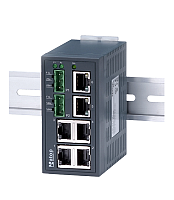
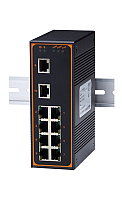
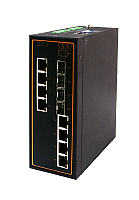
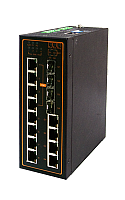 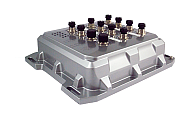

|
ATOP is a Taiwanese manufacturer of industrial electronics.
The company has been founded in early nineties of the 20th century.
Their today's product portfolio hints at ATOP's focus on a few particular areas
that receive the company's dedication, effort and resources,
resulting in no-nonsense product innovation and a build-up of in-house know how.
The apparent center of gravity lies in Ethernet switches,
routers and "serial device servers" (aka "terminal servers"
in ancient times).
All of these are based on unified hardware platforms
involving a switching matrix and/or an ARM CPU,
possibly accompanied by further peripherials
(UART's, wifi, WWAN radio). ATOP clearly leverages
a common firmware code base and a proven mechanical design
(in several basic form factors).
ATOP apparently offers these HW platforms in an open fashion
too, in the form of "industrial computers" with an ARM CPU
and a preloaded Linux image - a corresponding build environment
is available for application/service cross-compilation on a PC.
Within the identified product categories, the portfolio is surprisingly broad (rich in variants) compared to cosmetically similar competition. The ATOP products also offer interesting technical features that are still rare among similar competition. Examples:
Also noteworthy is the five-year warranty on the whole portfolio. This hints at the vendor's confidence in the quality of its products: power supply design, thermal design and soldering.
In terms of "scale", the ATOP portfolio of switches belongs to the segment
of smaller "satellite" DIN-mounted switches and basic 24-port (+uplink bonus)
rackmount switches for general industrial use.
ATOP clearly and understandably does not aspire to the "midrange enterprise",
campus, provider access/core/edge, carrier-grade or datacenter categories.
Instead, ATOP offers a surprising set of useful features
at the "industrial pole" of the application spectrum.
In the following chapters, an overview of ATOP product categories follows, in descending order by uniqueness.
This is a small group of products for use in "power substations" = in electric energy transmission and distribution.
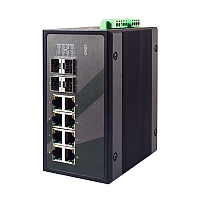
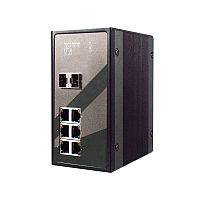
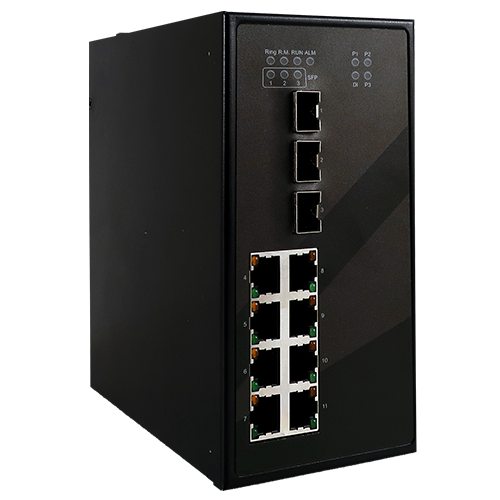

Key features:
At the moment, the product selection in this group is somewhat limited:
There's gossip about upcoming model families, the EHG77xx and RHG97xx, which should also support modern PTP.
ATOP's portfolio of switches for general industrial use
consists of a number of individual models and variants.
The variety stems from the following parameters:
The 19" models include a variant with redundant power input
with the two branches independently isolated. (When eyeing
a particular model, feel free to confirm this with us
or with ATOP techsupport, if you depend on that feature.)
With the smaller DIN-rail switches, the standard is obviously
a dual power input passively joined by a double Graetz bridge,
i.e. lacking mutual isolation between the input branches.
It is a typical cheap solution, sufficient for many use cases.
PoE is present as an optional feature in a large part of ATOP's switch portfolio - and it's strictly 802.3af/at compliant. Which means that also the Powered Device (a camera, wifi radio or some such) must be 802.3af/at compliant (passive splitters won't work).
The managed PoE switch can be configured to turn the PoE power on or off per port, and reports per-port PoE status: apart from on/off it also measures the instantaneous voltage and current per port.
In general it seems that ATOP prefers not to put an internal
step-up DC/DC converter inside a switch, for 802.3af/at PoE.
This implies, that (although switches without PoE have a fairly
wide power supply input range),
PoE switches by ATOP typically require an external supply of 48V nominal.
Which has the advantage, that it no longer needs to be debated,
how much power is available to the attached PoE Powered Devices,
and what the switch thermals will look like as a consequence.
With an external PSU, the switch will just feed them all and won't
even break a sweat, as all the electric power will just
"pass through the switch" without notable losses.
Also, if several years down the road the external
PoE PSU dies, it's just a commodity PSU, easily replaced,
and the expensive switch lives on!
In 19" PoE switches, there are even PSU variants, where the "switch core"
has a dedicated (dual redundant) power input, side by side
with a (dual redundant) 48V input for PoE = the nominal voltages
of both power systems can be different, and incidents in PoE
power do not endanger the switch core and management functionality.
If you aim for maximum power to be available to the powered devices,
consider tweaking the output voltage of the external PSU towards
the upper tolerance limit of the standard and your PSU,
i.e. 55 V or thereabouts. Many DIN-rail PSU's have a tweakable
knob (bolt head) for this, next to the output terminals.
The increase in voltage will allow for a lower current and
will thus indirectly suppress the loss percentage
a little, that occurs in contact resistances and in the CATx
wiring's own resistance. This measure is even presumed
in the tables of specified maximum power levels in the 802.3at spec.
(The power input arrangement described above, i.e. with a mandatory
external source of 48V for PoE, may not be set in stone across the
whole portfolio. When in doubt, feel free to ask.)

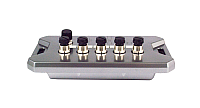 Several ATOP switch models in various mechanical form factors
have recently passed the tests for EN50155 (railway rolling stock) and EN50121-4 (railway track-side use):
Several ATOP switch models in various mechanical form factors
have recently passed the tests for EN50155 (railway rolling stock) and EN50121-4 (railway track-side use):
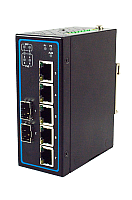
 ATOP makes several other product groups:
ATOP makes several other product groups:
With ATOP, the product names (ordering codes) follow some straightforward conventions: